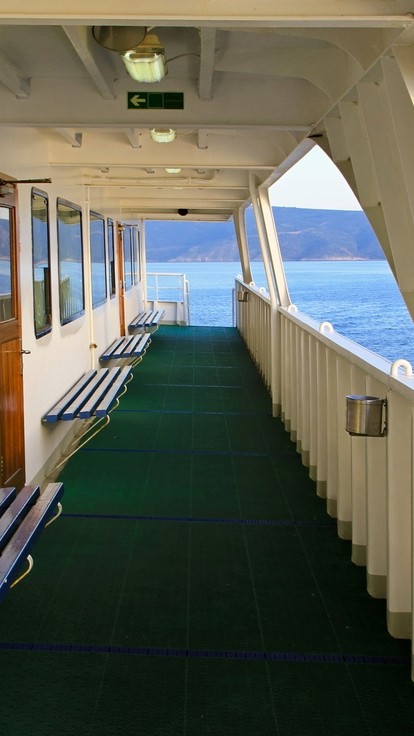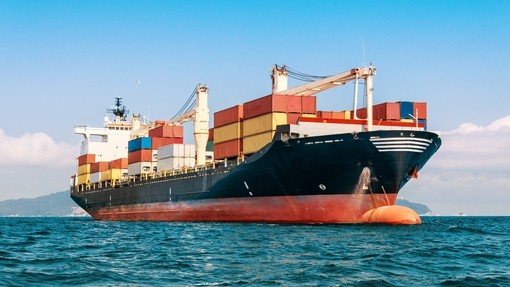“NEW FLAMENCO” - Globalia Business Travel S.A.U. (formerly TravelPlan S.A.U.) of Spain (Respondent) -v- Fulton Shipping Inc of Panama (Appellant) [2017] UKSC 43

Details
The Supreme Court has unanimously allowed owners’ appeal in the “NEW FLAMENCO”. This appeal considered whether the ship owners’ damages following acceptance of a charterers’ repudiatory breach of charter should be reduced as a result of the avoidance of a fall in the capital value of the ship. The ship was sold after acceptance of the charterers’ repudiatory breach when values were higher than they would have been at the time of contractual redelivery.
Factual background
The “NEW FLAMENCO” was a cruise ship, time-chartered by the claimant owners to the defendant charterers from February 2004 to November 2009. The charterers redelivered the vessel early, on 28 October 2007, and the owners treated the charterers as being in anticipatory repudiatory breach. Shortly before 28 October 2007, the owners entered into a memorandum of agreement for the sale of the vessel for US$23,765,000.
There was a significant reduction in the value of the vessel between October 2007, when the owners sold her, and November 2009, when she would have been redelivered to the owners had the charterers not been in breach of the charterparty. The value of the vessel had she been redelivered in November 2009, was US$7 million. The owners claimed damages calculated by reference to the net loss of profits during the remaining two year period amounting to €7,558,375. The charterers argued that the owners had to give credit for the difference between the amount for which the vessel had been sold in October 2007 (US$23,765,000) and her value in November 2009 (US$7 million) which wiped out the claim. The owners argued that the difference in value was legally irrelevant and did not affect their claim for damages. Interestingly, the owners, initially, gave credit for a ‘reduction in the re-sale value’ of US$5,145,000 which they subsequently sought to withdraw.
The arbitrator found for the charterers’ and ordered the owners to give credit for the difference in capital value. Mr Justice Popplewell allowed the owners’ appeal. He considered that in order for the wrongdoer to obtain credit for the benefit received by the innocent party due to a breach of contract, there must have been a direct and causative connection between breach and benefit. The difference in the value of the vessel was caused by the fall in the market which occurred irrespective of the charterers’ breach. The benefit was not caused by the charterers’ breach; it was caused by the owners’ own commercial judgement and risk taking for their own account. The Court of Appeal reversed Popplewell J’s decision on the basis that the benefit gained by the owners did arise from the consequences of the breach and it should therefore be taken into account in determining the claimants’ loss in the same way that benefits secured by spot chartering a vessel during an unexpired charterparty term would be.
Legal issues
Before the Supreme Court gave their conclusions, they restated the comprehensive legal reasoning detailed in Popplewell J’s judgement. In determining the point at which a wrongdoer should obtain credit for a benefit received following their breach, Popplewell J had helpfully summarised 11 principles that,according to legal precedent,should be considered.
- In order to take a benefit into account in reducing the loss that is recoverable by the innocent party, it was generally necessary that the benefit is caused by the breach: Bradburn, British Westinghouse, The Elena D’Amico.
- The causation test involves taking into account all the circumstances, including the nature and effects of the breach, benefit and loss, the manner in which they occurred and any pre-existing, intervening or collateral factors which contributed to their occurrence: The Fanis.
- The test is whether the breach has caused the benefit; it is not sufficient if the breach has merely provided the occasion for the innocent party to obtain the benefit: The Elena D’Amico. Nor is it sufficient merely that the benefit would not have been obtained but for the breach: Bradburn, Lavarack -v- Woods, Needler -v- Taber.
- It should make no difference whether the question is approached as one of mitigation of loss, or measure of damage; although they were logically distinct approaches, the factual and legal inquiry and conclusion should be the same: Hussey -v- Eels.
- The fact that a mitigating step may be a reasonable and sensible business decision with a view to reducing the impact of the breach, does not of itself render it one which is sufficiently caused by the breach. A step taken by the innocent party which is a reasonable response to the breach and designed to reduce losses caused thereby may be triggered by a breach but not legally caused by the breach: The Elena D’Amico.
- Whilst a mitigation analysis requires a sufficient causal connection between the breach and the mitigating step, it is not sufficient that in two stages there is a causative nexus between breach and mitigating step and a causative nexus between mitigating step and benefit. There should be a direct causative connection between breach and benefit (Palatine), in cases approached by a mitigation analysis no less than in cases adopting a measure of loss approach: Hussey -v- Eels, The Fanis. Accordingly, benefits flowing from a step taken in reasonable mitigation of loss should be taken into account only if and to the extent that they were caused by the breach.
- Where, and to the extent that, the benefit arises from a transaction of a kind which the innocent party would have been able to undertake for his own account irrespective of the breach, that is suggestive that the breach is not sufficiently causative of the benefit: Lavarack -v- Woods, The Elena D’Amico.
- There was no requirement that the benefit must be of the same kind as the loss being claimed or mitigated: Bellingham -v- Dhillon, Nadreph -v- Willmett, Hussey -v- Eels, The Elbrus, of The Yasin; but such a difference in kind may be indicative that the benefit was not legally caused by the breach: Palatine.
- Whether a benefit was caused by a breach is a question of fact and degree and all the relevant circumstances must be considered to form a commonsense overall judgment on the sufficiency of the causal nexus between breach and benefit: Hussey -v- Eels, Needler -v- Taber, The Fanis.
- Although causation between breach and benefit is generally a necessary requirement, it is not always sufficient. Considerations of justice, fairness and public policy may preclude a defendant from reducing his liability even where the causation test is satisfied: Palatine, Parry -v- Cleaver.
- In particular, benefits should not be taken into account, even where caused by the breach, where it would be contrary to fairness and justice for the defendant wrongdoer to appropriate them for his benefit because they were the fruits of something the innocent party had done or acquired for his own benefit: Shearman -v- Folland, Parry -v- Cleaver and Smoker.
With these factors in mind, the Supreme Court found that the fall in the value of the vessel was irrelevant because the owners’ interest in the capital value of the vessel was unrelated to the interest injured by the charterers’ repudiation of the charterparty.
Lord Clarke stated that the essential question was whether there was a sufficiently close link between the loss and the benefit rather than whether or not they were similar in nature and the absence of this relevant causal link precluded the charterers from setting off the difference in market value against the owners’ claim. The repudiatory breach by charterers had not necessitated the sale of the vessel at that particular time or at all. Indeed, the vessel could also, in theory, have been sold during the term of the charterparty itself. The decision taken by owners to sell the vessel was a commercial one, made at their own risk and, had the value of the vessel risen during the relevant time frame, the owners would not have been able to claim the difference in market value from the charterers. The Supreme Court repeated Popplewell’s words at para 19 that ‘the breach merely provided the context or occasion for the owners to realise the capital value of the vessel. It was the trigger not the cause.’
The Supreme Court also found that the sale of the ship was not, on its face, an act of mitigation. Had there been an available charter market, the loss would have been the difference in the actual charterparty rate and the assumed substitute contract rate. In the absence of an available market, the measure of the loss is the difference between the contract rate and what was or ought reasonably to have been earned from employment of the vessel under shorter charterparties, for example on the spot market. The relevant mitigation is therefore the acquisition of an income stream alternative to the charterparty; the sale of the vessel cannot be a successful form of mitigation because it did not prevent or reduce the loss of the income stream. The sale of the vessel is simply the exercise of the owners’ property right which exists independently of the charterparty and its termination.
Case comment
Popplewell J was therefore correct to hold that the arbitrator erred in principle and his order, setting aside the arbitral award that declared the charterers were entitled to a credit of €11,251,677 in respect of the benefit that accrued to the owners when they sold the vessel in October 2007 as opposed to November 2009, was restored.
The matter will be remitted to the arbitrator for determination of a number of outstanding issues partly arising as a result of owners’ concession.
The case highlights the difficulties that can arise in relation to mitigation of loss where there is a breach of contract.
This article originally appeared in the July 2017 edition of shipping case digest. Other articles include:
Vitol -v- Beta: acceptance of a counterparty’s repudiatory breach is considered by the High Court






